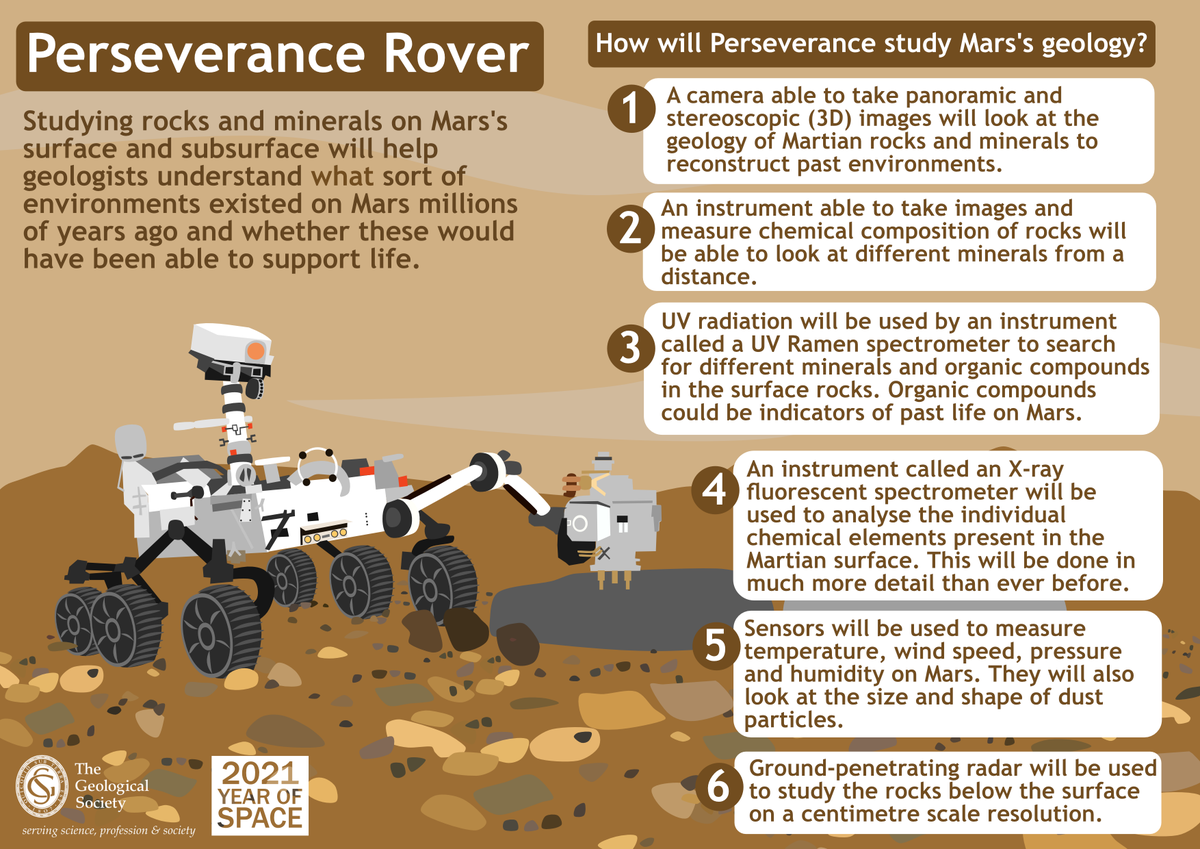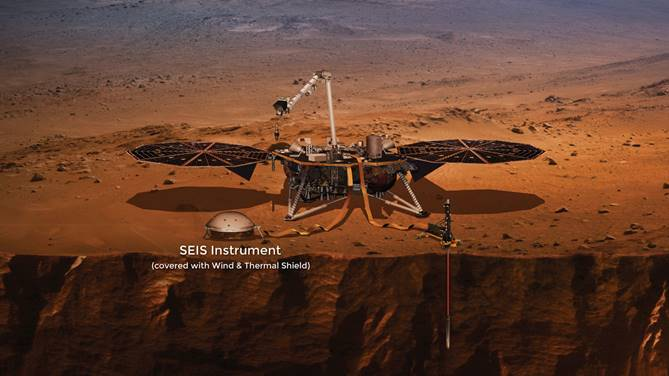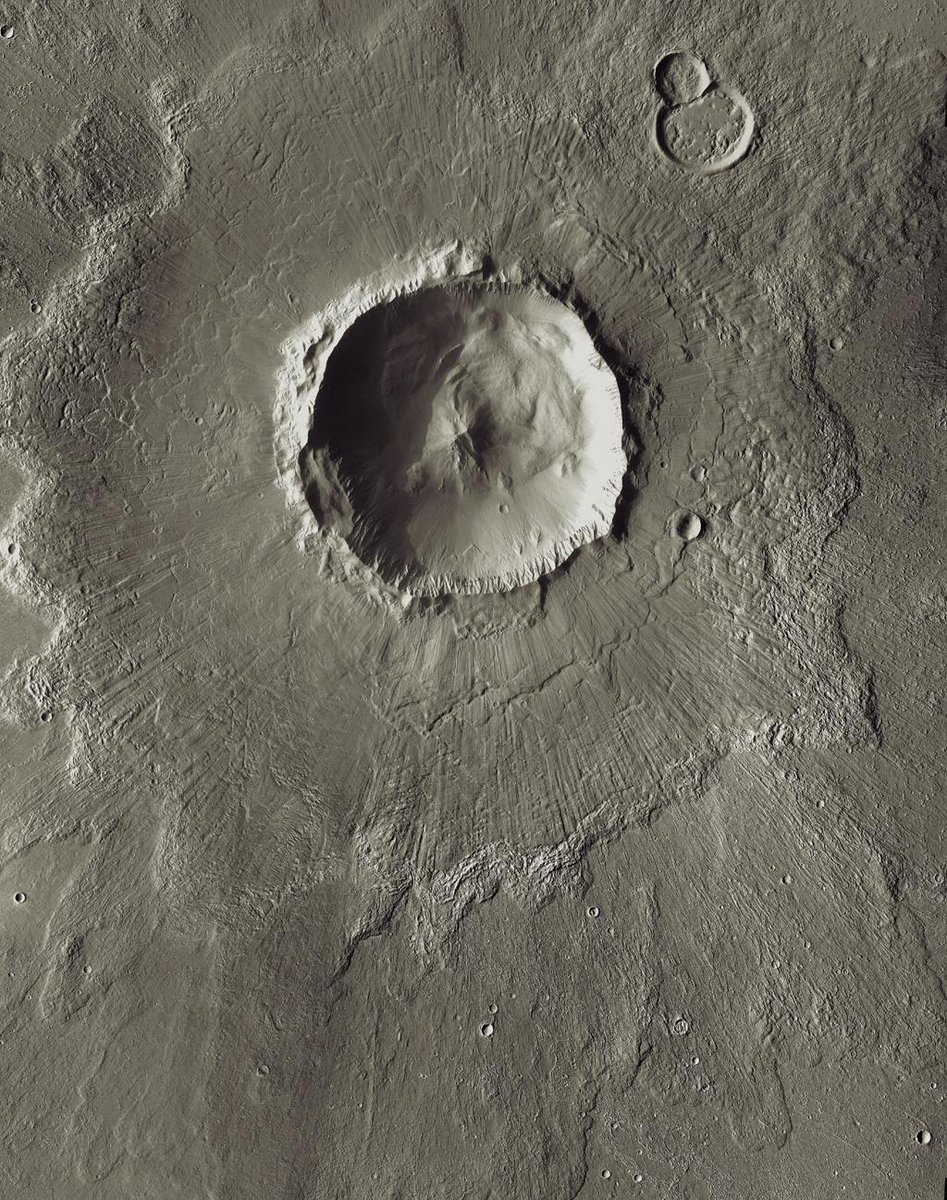NASAs #perseverance rover is officially on its way to Mars!  It won't get there until Feb 2021 so in the meantime check out our Q&A below - answers provided by some brilliant planetary geologists
It won't get there until Feb 2021 so in the meantime check out our Q&A below - answers provided by some brilliant planetary geologists 
 #CountdownToMars
#CountdownToMars  #perseverancerover
#perseverancerover
 It won't get there until Feb 2021 so in the meantime check out our Q&A below - answers provided by some brilliant planetary geologists
It won't get there until Feb 2021 so in the meantime check out our Q&A below - answers provided by some brilliant planetary geologists 
 #CountdownToMars
#CountdownToMars  #perseverancerover
#perseverancerover
What are the chances of Mars being hit by an asteroid? @Bpkresearcher
@Bpkresearcher
 @Bpkresearcher
@Bpkresearcher
The surface of Mars is covered by impact craters, formed from asteroids hitting the surface. Most of the larger ones are really old, but Mars is still hit by small asteroids today. Luckily, the chances of Perseverance being hit by one is very low - @JoelMDavis
Is there any type of ozone layer on Mars? @LaisettiSiva
Our Ozone layer is a part of the atmosphere that absorbs some of the harmful UV radiation from the sun. Mars does have very small amounts of Ozone and water vapour but not enough to create a ‘layer’ like Earth to protect Mars from the Sun's ultraviolet radiation - @saramotaghian
If Mars is red because it’s visible exterior is rich in iron and has rusted, how has this oxidation process occurred if there is no oxygen on Mars? 

There are very very small amounts of Oxygen in Mars’ atmosphere today, but this wasn’t always the case.
There was likely liquid water on the surface of Mars across it’s early history and this water could be trapped in the atmosphere. (1/2) @saramotaghian
There was likely liquid water on the surface of Mars across it’s early history and this water could be trapped in the atmosphere. (1/2) @saramotaghian
Will Curiosity rover and the Perseverance rover see each other on Mars? 

No, not unless they drive for a very long time in the right direction! The landing sites of Curiosity rover (Gale crater) and Perseverance rover (Jezero crater) are more than a thousand kilometres apart! (1/3) Lydia Hallis @UofGGES
Since it landed in 2012 Curiosity rover has driven less than 30 km in total, because it has been busy collecting scientific data. Even when the rovers are on the move they have to drive very slowly (cm/hour) (2/3) Lydia Hallis @UofGGES
They drive slowly so they don't hit anything or fall over! So, both rovers could drive for decades towards each other but will never meet before they die. (3/3) Lydia Hallis @UofGGES
What is the importance and what are the processes used in colour correcting an image taken on Mars so that geologists can identify structures and features more easily? 

Humans colour vision evolved to be particularly sensitive to blue, red and green. Because of the absence of blue and green features on Mars, humans can struggle to see the details in raw images. (1/2) @ICPlanetologist
To counter this, images can be reprocessed to stretch the available colours across the spectrum which humans can see. The 2 images are before & after white-balancing: note the improved clarity in the processed image of Mt. Sharp - many more layers visible (2/2) @ICPlanetologist
Are there any plans to image the interior of Mars?
NASA’s Insight mission is currently attempting just this! Using the SEIS instrument (built in the UK), the science team are aiming to build a picture of Mars’ interior structure using seismic waves from earthquakes or meteorite impacts. @ICPlanetologist
Why is the Earth spinning? 

The Earth’s spin is a very old thing—all of the planets are still spinning from the time they formed! Before the Solar System formed, there was a cloud of gas and dust. This cloud slowly flattened into a spinning disk, and in the centre, the Sun formed  (1/2) @Divya_M_P
(1/2) @Divya_M_P
 (1/2) @Divya_M_P
(1/2) @Divya_M_P
These little 'bits' of gas & dust bumped into each other and got bigger. The bigger they got, the more gravity they had, so more things bumped into them. This continued until most of the dust & gas had formed into planets and moons which are still spinning today! (2/2) @Divya_M_P
Have the Mars rovers been able to date the rocks using geochronology? 



Curiosity Rover was the first to perform rock dating experiments: K-Ar dating & surface exposure dating. Radioactive isotope K-40 decays into Ar-40 - since the decay rate is known, the amount of these 2 isotopes in a sample can give a rock/mineral formation date (1/6) @Divya_M_P
The Curiosity team used the Sample Analysis on Mars (SAM) instrument, which heats up powdered rock samples in an “oven” and analyses the gases that form, to date mudstones in Gale Crater using this kind of dating. (2/6) @Divya_M_P
Cosmic rays hitting the surface of a planet/moon also create measurable isotopes. Using these isotopes to date rock is called surface exposure dating. The SAM instrument measured 3 of these isotopes to figure out how long the mudstones were exposed at the surface (3/6) @Divya_M_P
Usually, planetary scientists have to rely on dating meteorites from the Moon, Mars, and other bodies that have landed on Earth, or count craters from remote sensing images of the surfaces of these bodies. (4/6) @Divya_M_P
Crater counts are based on the principles of geology; impacts have always been happening in the Solar System, so smooth surfaces should be “younger,” going through more recent surface processes, than heavily cratered surfaces. (5/6) @Divya_M_P
These geochronology data are important to help us to understand whether life could have lived on the surface of Mars, and for how long the surface was friendly for life. A “younger” surface means it had active processes - possibly water-driven - in recent times! (6/6) @Divya_M_P
If the composition of the moon is similar to the Earth, will the moon evolve to be more like the Earth? 



The Earth & Moon are similar in age, ~ 4.53-4.54 billion years old, but it's probably too late for the Moon to become like the Earth! The key differences are that the Earth has plate tectonics, a partly-molten core, & still has earthquakes & volcanic eruptions (1/3) @MarissaLoBot
The Moon is smaller than the Earth so unfortunately it's lost the energy for all of those processes to occur in the same way. The Moon used to have active volcanism: clear evidence for this is the dark patches of basalt, called the mare, on the Moon's surface (2/3) @MarissaLoBot
Moonquakes were also observed in the 1970s, using seismometers set up by Apollo astronauts. These moonquakes were much weaker than earthquakes (3/3) @MarissaLoBot 

How old is Mars? @Bpkresearcher
Mars is approximately 4.603 billion years old! Planetary scientists have worked this out using a method called crater counting and by looking at the chemistry of meteorites from Mars (1/2) @MarissaLoBot
There are craters all over the surface of Mars. The more craters a surface has, the older it is. Here's an example of a crater, Bacolor Crater, which is about 20 kilometres wide! (2/2) @MarissaLoBot
Where in the strata does the rover take samples? @Bpkresearcher
Perseverance will collect ~30 drill samples from 5cm into the rock (or regolith) in Jezero crater. One of the main targets are sediments from the Jezero delta which were deposited by water. Another target could be igneous rocks which could be dated back on Earth @JoelMDavis
Is there any tectonic activity on Mars? 

There isn’t any tectonic activity on Mars, but there are lots of volcanoes that were active in the past and the NASA Insight rover currently on Mars, has a suite of instruments that will help us understand more about the interior of Mars @sarahboazman
Whilst Earth is a warm and wet planet, Mars is cold and dry. Orbiting 1.5x further from the Sun than Earth, Mars receives just under half of the Solar power, and with 1/2 of Earths diameter and 1/10th the mass, the gravity is about 2.5x weaker. (1/3) @rbstabbins
This has left Mars with an atmosphere 0.6% of Earth pressure, trapping less of the weaker Solar flux, so the planet is cold (around -60°C), and exposed to harmful radiation. The low pressure and temperature prevent liquid water existing on the surface today. (2/3) @rbstabbins

 Read on Twitter
Read on Twitter






